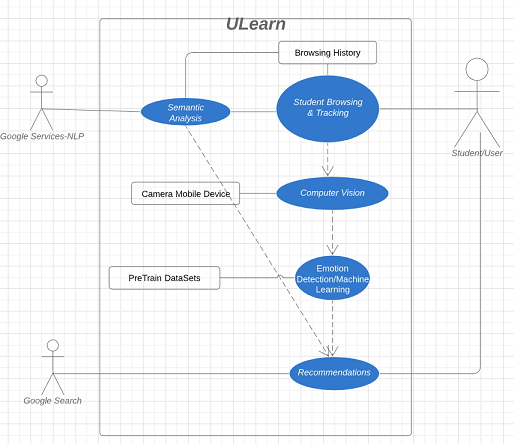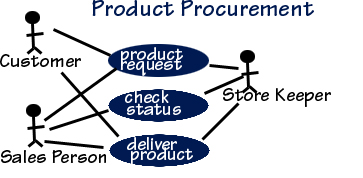"Helps you and others understand you application or more specifically can be one use (of many) of your application"
Formally = description of a set of action sequences, including variants, that a system performs that yields an oberservable result to a particular actor
NOTE: actor = people, organizations, or other systems that interact with your system/application
Example 1: ULearn
actors: Student, Google NLP Services, Google Search , and "ULearn System"(not actually actor)
action sequence: Frustration Detection and Recommendation Offering
-
student - viewing online material
-
ULearn - monitor student using Computer Vision
-
student to ULearn - frustration exhibited and detected
-
ULearn to Google NLP -semantically analyze currently viewed material
-
ULearn to Google Search - find new semantically related material
-
ULearn to Student - present "Tips" of related similar content to alieviate frustration
Use Case Diagram (produced by LucidCharts) -
NOTE: in our use case diagram we place the primary actors (the ones that start use of ULearn) on the right the ULearn system and the secondary actors (the ones that are invoked ULearn) to the left of the ULearn system

Example 2: generic Sales
actors: customer, sales person, store keeper
action sequence: Store Procurement
-
customer to sales person - request product
-
sales person to store keeper - check status
-
store keeper to sales person -deliver product
-
sales person to customer - deliver product

Try it out with LucidCharts ....first play this quick video
